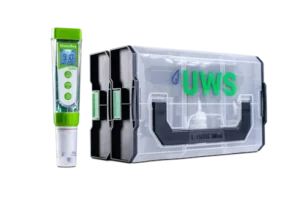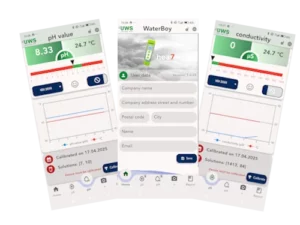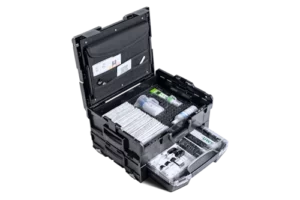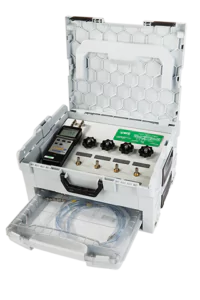Measuring devices for analyzing the heating water
Only if the heating water has the correct values in accordance with VDI 2035, ÖNORM H 5195-1 and SWKI BT 102-01 is it possible to operate the system efficiently and smoothly.
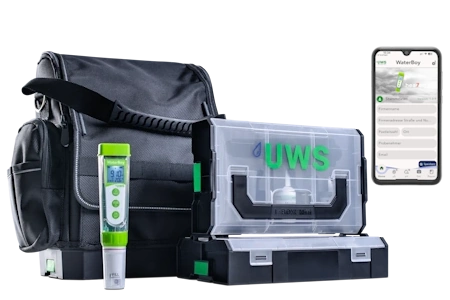
The right measuring devices for analyzing the heating water
Why measure water quality?
Today, measuring devices for heating water are a constant companion for heating specialists. VDI 2035, ÖNORM H 5195-1 and SWKI BT 102-01 require certain limit values for the pH value and conductivity of heating water during initial filling, topping up and maintenance of a heating system. Depending on the material composition, the pH value ranges from 8.2 to 10 and the maximum total hardness of the water with low-salt operation < 0.3 °dH. For the required documentation of heating systems, you need correspondingly accurate measurement technology.
Measuring device for pH value and conductivity
Our WaterBoy conductivity and pH value measuring device makes it much easier for HVAC specialists to measure heating water. Water analysis of the heating water becomes child’s play. This is because, in addition to the easy-to-use measuring device, our intuitive app supports you. The WaterBoy app guides you step by step through the measurements for pH value and conductivity and simultaneously provides a corresponding measurement report as a pdf document. Depending on the selected standard, you also receive a precise interpretation of the measurement results. The app guides you through the 3-point calibration just as intuitively.
The dual measuring device for pH value and conductivity is supplied with additional accessories such as calibration liquids in a practical L-BOXX case. And an optional WaterBoy Bag (item no. 100047-5) is also available.
The system separator for protecting the drinking water must also be tested once a year in accordance with DIN EN 806 / DIN EN 1717. The functions to be tested are tightness, start of opening of the relief valve, tightness of the relief valve, venting of the medium pressure zone to atmospheric pressure and the tightness of the outlet-side non-return valve. Quite simply with our PST measuring case.
Calibration
Calibrating measuring devices is essential in order to obtain accurate measurement results. You can find out how to calibrate measuring devices correctly and which calibration solutions are included in the WaterBoy measuring kit on “Calibration made easy“.
You are on the safe side with UWS measuring devices
You can choose between different measurement technology cases. From the “WaterBoy” measuring case including the intuitive WaterBoy app to the bigger WaterBoy Premium measuring case and the L-BOXX PST for system separator testing.




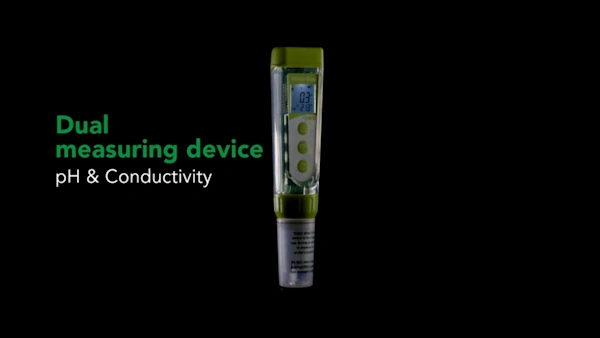
FAQ on measuring devices for heating water and cooling water
What conductance should heating water have?
The electrical conductance of the heating water provides information about the quantity of dissolved salts and minerals. If the conductivity is too high, this can lead to corrosion and deposits. With our WaterBoy dual measuring device, measurement is very easy.
- Recommended range: Depending on the manufacturer and heating system, the conductance value should be < 100 µS/cm for low-salt operation and <1,500 µS/cm for high-salt operation.
- Modern heating systems: A low conductance value of less than 100 µS/cm is recommended, especially for aluminium heat exchangers, in order to minimize the risk of corrosion.
- DIN EN 14868 and VDI 2035: These standards provide information on permissible values, whereby a value of less than 100 µS/cm is ideal for many systems.
How do I measure the conductivity of heating water?
The conductivity (conductance) is measured using a conductivity meter, such as the UWS WaterBoy. This is how it works:
- Prepare the measuring device: Calibrate the device using the WaterBoy APP (if necessary) and switch it on.
- Rinse the measuring probe sufficiently with heating water.
- Take a water sample: Take a clean sample from the heating circuit.
- Carry out the measurement: Immerse the measuring probe in water and read off the value.
- Classification: If the value is above the recommended values (see VDI guidelines), it may be necessary to soften or desalinate the heating water.
What pH value should heating water have?
The pH value is decisive for corrosion protection:
- Optimum range: The pH value should be between 8.2 and 10. If aluminum components are installed in the system, only a pH value range of 8.2-9 applies according to VDI 2035.
- Why not lower? A pH value below 7 means that the water is acidic, which promotes corrosion on metal parts.
- Why not higher? A pH value that is too high can also lead to deposits and damage to certain materials (e.g. aluminum).
- Measurement: The pH value can be determined with our digital WaterBoy measuring device.
- The UWS mixed bed resin Vadion pH-Control ensures automatic and correct pH value adjustment.
Why an app for measuring heating water?
An app like the WaterBoy app makes it much easier to measure, calibrate and document water parameters.
The advantages:
- Documentation and comparison of measured values over longer periods of time
- Simple operation and data storage
- Help with the important calibration
- Support with the interpretation of measurement results
- Clear protocol as a basis for evidence
Do conductivity meters and pH meters need to be calibrated regularly?
Yes, conductivity meters should be checked regularly every 14 days with a calibration solution. PH meters even every 5 days. This is very easy with the WaterBoy app.
- Temperature: Higher temperatures increase the conductivity. The UWS WaterBoy has automatic temperature compensation (ATC).
- Measurement errors: Residues on the probe or uncalibrated devices can provide incorrect values.
Are there combined measuring devices for heating water?
Yes, there are multifunctional devices that measure several parameters (pH, conductivity, TDS). These are practical for comprehensive analyses. The dual measuring device UWS WaterBoy incl. app measures pH value, conductivity, TDS (total dissolved solids), salinity, temperature and specific resistance.
What are the sources of error in heating water measurement?
Frequent sources of error are:
- Dirty probes: Influence the measurement results. Important: Rinse the measuring probe with sufficient heating water before measuring
- Incorrect calibration: Particularly important for pH and conductivity meters. This is why the UWS WaterBoy is calibrated precisely using the app
- Air bubbles in the measuring device: Can produce incorrect values (e.g. in conductivity probes)
How do I calibrate the UWS WaterBoy?
- Prepare the pH calibration solutions 4.01, 7.01 and 10.01 contained in the UWS measuring kit in calibration vessels.
- Rinse the measuring device probe with distilled water and connect the WaterBoy to the app.
- Click on “Calibrate” in the pH tab in the UWS WaterBoy app and then follow the instructions.
- Important: Always rinse the measuring probe sufficiently with distilled water before immersing it in a new calibration solution.
- They proceed in the same way when calibrating the conductivity.
- The UWS WaterBoy app warns you if the calibration was too long ago and also notes this in the log.
Do I have to document the measurement of heating water?
According to VDI 2035, it is necessary to document these parameters in order to guarantee the quality of the heating water and prevent damage caused by corrosion or deposits.
The values determined should be recorded in a log or a digital recording, as with the WaterBoy. The date, time, measuring device and the person who carried out the measurement must be documented.



